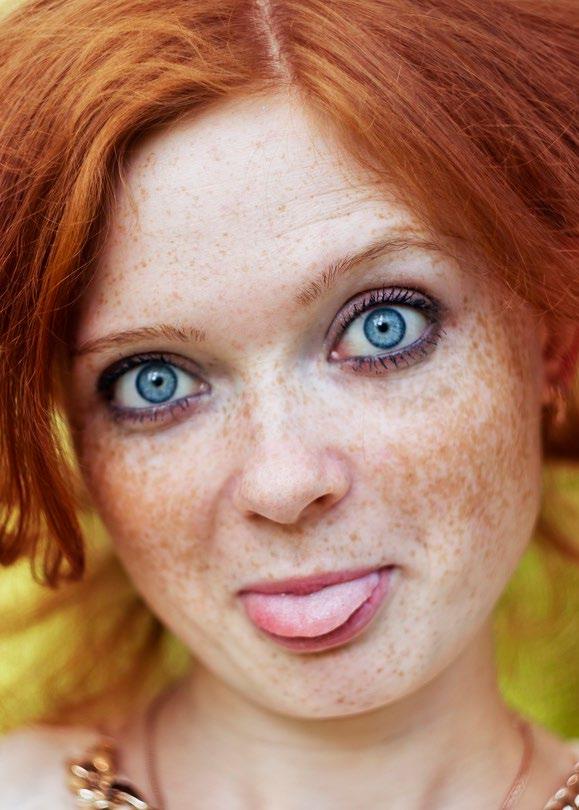
YOU ARE


YOU ARE
YOU ARE YOU ARE

EDITOR’S LETTER
COLOPHONE
WHY IT IS GOOD TO BE A REDHEAD
Jacky Colliss , 16 September 2015, The Guardian
HOW CAN I IMPROVE MY SELF-ESTEEM
D’Arcy Lyness, PhD, August 2018, Kids Health
SELF ACCEPTANCE IS THE KEY
Adrienne and Stephanie Vendetti, 10 December 2013, How to be a red head blog
HOW I LEARNED TO LOVE BEING GINGER
Conrad Quilty-Harper, 7 June 2017, GQ Magazine
Max Williams, 1st August 2020, Square Mile Magazine
THE ORIGINS
Natasha Sheldon, 2020, History Collection
RELAX YOU ARE NOT DYING OUT
Adam Rutherford, 10 July 2014, The Guardian
DAEHDER IDENTITY
Rossana Gombetti
Rossana Gombetti 10 6 7 8 12 14 18 22 24 28 32
HUNDRED OF GINGER NUTS
Marianne Power, 13 September 2011, The Daily Mail
UNDERSTANDING PREJUDICE
Ally Fogg, 15 January 2013, The Guardian
All of us need incouragement and appreciation from others, above all from who we love.
The reason is that every human beings deserve to believe in their own abilities and in who they are as person.
Often we feel accepted if we align to others, if not we feel judged, different and wrong. These impressions can refer not only to what we do but also to how we appear.
The first thing human beings visually notice are colours. They have always been used to identify objects and people; involuntarily sometimes they cause happiness, sadness, fear or anger according to which colour we see.
For example red colour is tied to emotions like anger, danger, passion and love; like black colour we can not trust it and because of popular culture prejudice, we try to keep the distance and looking for positive vibes somewhere else.
Even though we know that how we are inside is more important than our appearence, popular beliefs are well established in our minds. Indeed they lead to useless intolerance acts that can cause loss of self-esteem, confidence and identity, but also depression and anxiety.
The aim of this magazine is to support teenagers and young adults, instilling positive messages through specific contents focused on strengthening and improving personal awareness.
Rossana Gombetti Executive Editor
Editor-in-chief
MARK OWEN
Creative Director BEN DUNNING
Executive Editor
ROSSANA GOMBETTI
Executive Assistant ERIKA LION
Associate Editor
CAROLINE MEYER
Feature Director
RACHEL PARLOUR
News Editor
JACK CARON
Social Media Manager
MARY PATTY
Art Director
SUE CREW
Art Editor PAUL LEMAN
Picture Director FRANK VALLEY Designer RUTH BLOSSOM
Content Director ELISE JULY
Content Editor HANNE HEART
Content Assistant JULIAN RACE
Chief-Sub-Editor ANAXOR ITEB
Deputy Chief -Sub-Editor ERIKA LION
Group Managing Editor ELISE MODI’
Finance Business Partner RAUSHAN LEVY
Contributing Editor JOSEPH TACKLE
to Jacky Colliss
WHY BEING REDHEADED IS A BLESSING
It’s actually nothing to do with the hair; it’s what we in the West think of as going with it: pale, pale skin. But we are totally incorrect in doing so. There are redheads around the planet, from west to east. On the Solomon islands in the Pacific, a completely different genetic break has giv en cinnamon afros to a select few, with skin dark enough to withstand sun that would wither me in seconds. But for those who happen to live in west ern Europe, then their pale skin gives them a superhuman ability to make Vitamin D from whatever sunlight is available. Lots of Vitamin D means a super-boosted immune system, which means in turn that, for centuries, if either of us was going to fall victim to smallpox, consumption, or plague, it would have been you, blondie, not me.
2. BEING A REDHEAD PRECLUDES YOU FROM BEING A SLAVE TO CONVENTION

Don’t mess. We are scientifically proven to be incen diary. We of the fellowship of the MC1R – the gene that is linked most strongly to red hair – can not only make adrenalin faster than those with other hair col ours, our cells can access it more speedily, too. When I was very young, with hair the colour of the label on a bottle of Lea & Perrins, the class bully at my village school in Suffolk was fool enough to pick on a friend of mine. Apparently, in front of all the mothers lined up at the school gate to collect their children, I wound up my right arm like Popeye, and decked him. And I got away with it. As my mother hustled me away, I heard one of her friends remark above my head: “Well, what did he expect? She’s a redhead!” I was five years old and I had just learnt two very important lessons.
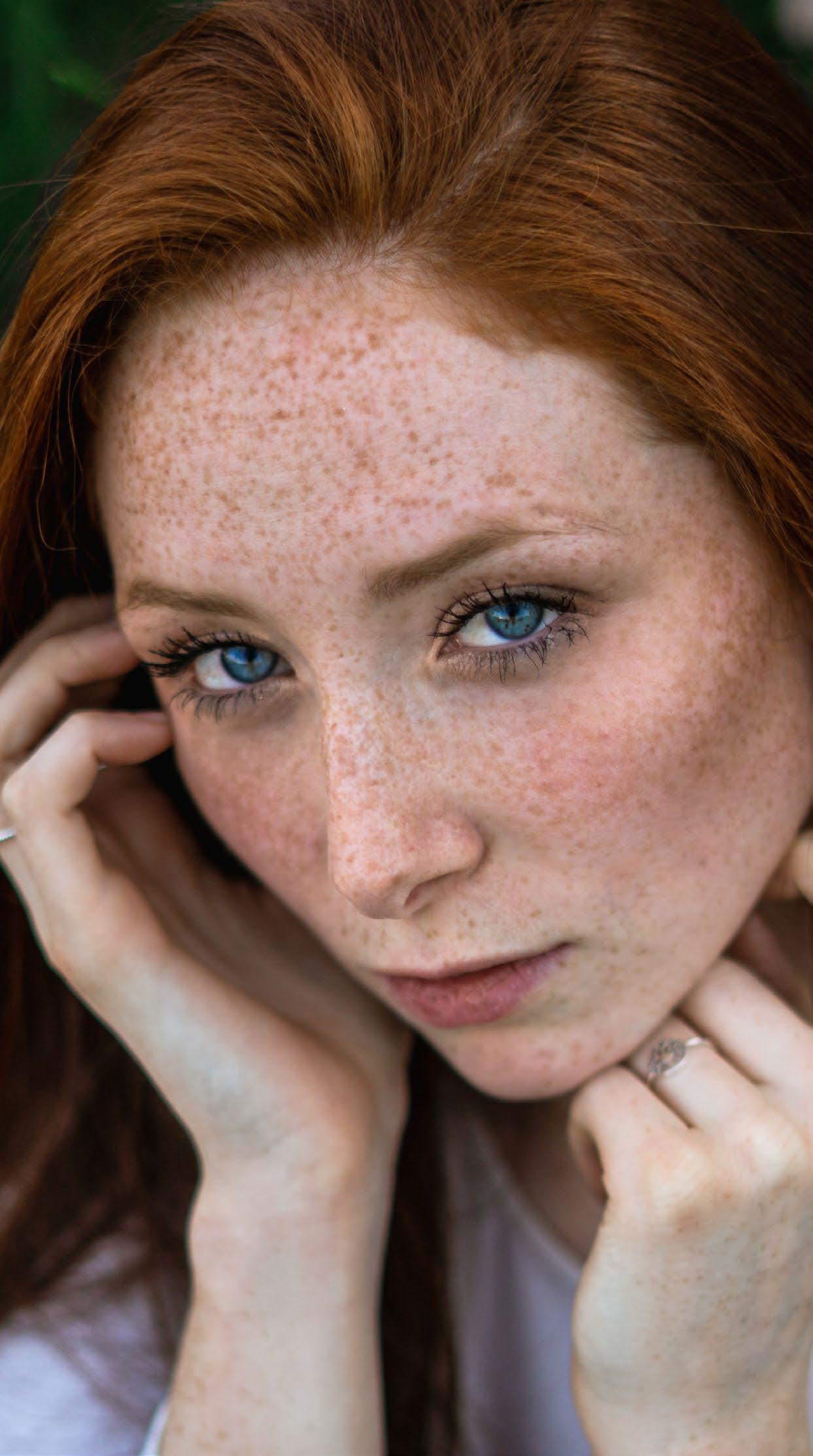
One, the world has expectations of redheads; and two, those expectations give you a license not granted to other people. I was expected to lose my temper.I could be a screwball. I could be fiery. Boudicca was a redhead. Emperor Frederick II (stupor mundi, or “the wonder of the world”, according to his contemporaries) was a redhead. Henry VIII was a redhead. Elizabeth I was a redhead. Oliver Cromwell was a redhead. Garibaldi was a redhead. Wild Bill Hickock and Jesse James were redheads. Churchill was a redhead. I consider them to be rather good company.
Being a redhead means, more often than not, standing up for difference. To celebrate the otherness of ourselves and, well, others. As different forms of prejudice and discrimination have been slowly but steadily outlawed, the fact that the rubiferous are still expected to put up with being stereotyped, teased, marginalised and picked on has become more and more visible.
We just do. It’s the colour of blood, fire and passion, and in the East of good fortune. It also represents danger, sex and life itself –and unsurprisingly, we’re hard-wired for it to register with us, whether we like it or not. It may have been the very first colour that humans ever learned to distinguish, when our species still lived in the trees, in order to be able to select ripe fruits from unripe. And it still speaks to something primal in the human brain today. Those who lose the ability to see colour as a result of brain damage find red is the one that comes back to them before any other. People emulate it (more red hair dye is sold than any other hue, in a market that in the US alone is now worth $200m a year), and when people see it, they engage with it – they just can’t help themselves. Apparently, its rarity sets off our reward-seeking instinct. If you’re a redhead, it’s likely that the first thing anyone will notice about you is your hair, and it will be the one thing that you can – usually – be sure they will remember.
4. OUR SHADE BRINGS SOLIDARITY I probably shouldn’t even be telling you this, but imagine that you and your rare and beautiful hair are heading into work on the train on a rainy Wednesday morning; or waiting in the queue for the one self-service check-out machine, and suddenly you spot another of your kind. And the two of you share “the look” – a little glance, a half-smile, a lift of the eyebrow. A tiny moment of ginger solidarity: ‘Hello, I see you, how’s the world treating you?’ Why don’t blondes and brunettes have a special look? Because they’re two a penny, that’s why.
But we’re countering the prejudice and discrimination still expressed against our hair colour (especially towards men) in festivals that now loop around the globe, from Israel’s Carrot Kibbutz to San Francisco. We’re a community. We have our own groups on social media and websites. We have ruby-locked role models on the red carpet, from Amy Adams to Julianne Moore and more recently Isla Fisher. We have Ed Sheeran, who credits his early success to the stand-out power of his firework hair. We have Benedict Cumberbatch, who calls himself “auburn” and currently has half London standing in line to watch him play the Dane, and Michael Fassbender, who has half of Hollywood worshipping at his feet – along with every woman I know – and blithely refers to himself as a ginger Viking. Ginger pride is taking over.
THE FUTURE’S BRIGHT: THE FUTURE’S ORANGE

D’Arcy Lyness, Psychologist
What Is Self-Esteem?
Self-esteem means feeling good about yourself.
That voice is more hopeful. It helps you feel OK. And it could turn out to be true. Sometimes, the voice in our head is based on harsh words others have said. Or on bad times we have faced. Sometimes, the voice is just us being hard on ourselves. But we can change the voice in our own head. We can learn to think better of ourselves. Learning to do things. We feel good when we learn to read, add, draw, or build. Play a sport, play music, write an essay, ride a bike. Set the table, wash the car. Help a friend, walk the dog. Each thing you learn and do is a chance to feel good about yourself. Step back and look what you can do. Let yourself feel happy with it.
People with self-esteemfeel liked and accepte are proud of what they do believe in themselves.
People with low self-esteem: feel bad about themselves are hard on themselves think they are not good enough.
Where Does Self-Esteem Come From?
Parents, teachers, and others. The people in our lives can affect how we feel about ourselves. When they focus on what’s good about us, we feel good about ourselves. When they are patient when we make mistakes, we learn to accept ourselves. When we have friends and get along, we feel liked.
But if adults scold more than they praise, it’s hard to feel good about yourself. Bullying and mean teasing by siblings or peers can hurt self-esteem, too. Harsh words can stick, and become part of how you think about yourself. Luckily, it doesn’t have to stay that way.
But sometimes we’re too hard on ourselves. We don’t accept that what we do is good enough. If we think, “It’s not really any good,” “It’s not perfect,” or “I can’t do it well enough,” we miss the chance to build self-esteem.
What If My Self-Esteem Is Low? You can do things to feel better about yourself. It’s never too late.
Here are some tips to raise your self-esteem:
Be with people who treat you well. Some people act in ways that tear you down. Others lift you up by what they say and do. Learn to tell the difference. Choose friends who help you feel OK about yourself. Find people you can be yourself with. Be that type of friend for others.
The voice in your own head. The things you say to yourself play a big part in how you feel about yourself. Thinking, “I’m such a loser” or “I’ll never make friends,” hurts your self-esteem.
There are other ways to think about the same things. “I didn’t win this time — but maybe next time.” “Maybe I can make some friends.”
Say helpful things to yourself. Tune in to the voice in your head. Is it too critical? Are you too hard on yourself? For a few days, write down some of the things you say to yourself. Look over your list. Are these things you’d say to a good friend? If not,

rewrite them in a way that’s true, fair, and kind. Read your new phrases often. Do it until it’s more of a habit to think that way. Accept what’s not perfect. It’s always good to do the best you can. But when you think you need to be perfect, you can’t feel good about anything less. Accept your best. Let yourself feel good about that. Ask for help if you can’t get past a need to be perfect.
Set goals and work toward them. If you want to feel good about yourself, do things that are good for you. Maybe you want to eat a healthier diet, get more fit, or study better. Make a goal. Then make a plan for how to do it. Stick with your plan. Track your progress. Be proud of what you’ve done so far. Say to yourself, “I’ve been following my plan to work out every day for 45 minutes. I feel good about it. I know I can keep it up.”
Focus on what goes well. Are you so used to talking about problems that they’re all you see? It’s easy to get caught up in what’s wrong. But unless you balance it with what’s good, it just makes you feel bad. Next time, catch yourself when you complain about yourself or your day. Find something that went well instead.

Give and help. Giving is one the best ways to build self-esteem. Tutor a classmate, help clean up your neighborhood, walk for a good cause. Helpout at homeoratschool. Make it a habit to be kind and fair. Do things that make you proud of the kind of person you are. When you do things that make a difference (even a small one) your self-esteem will grow.
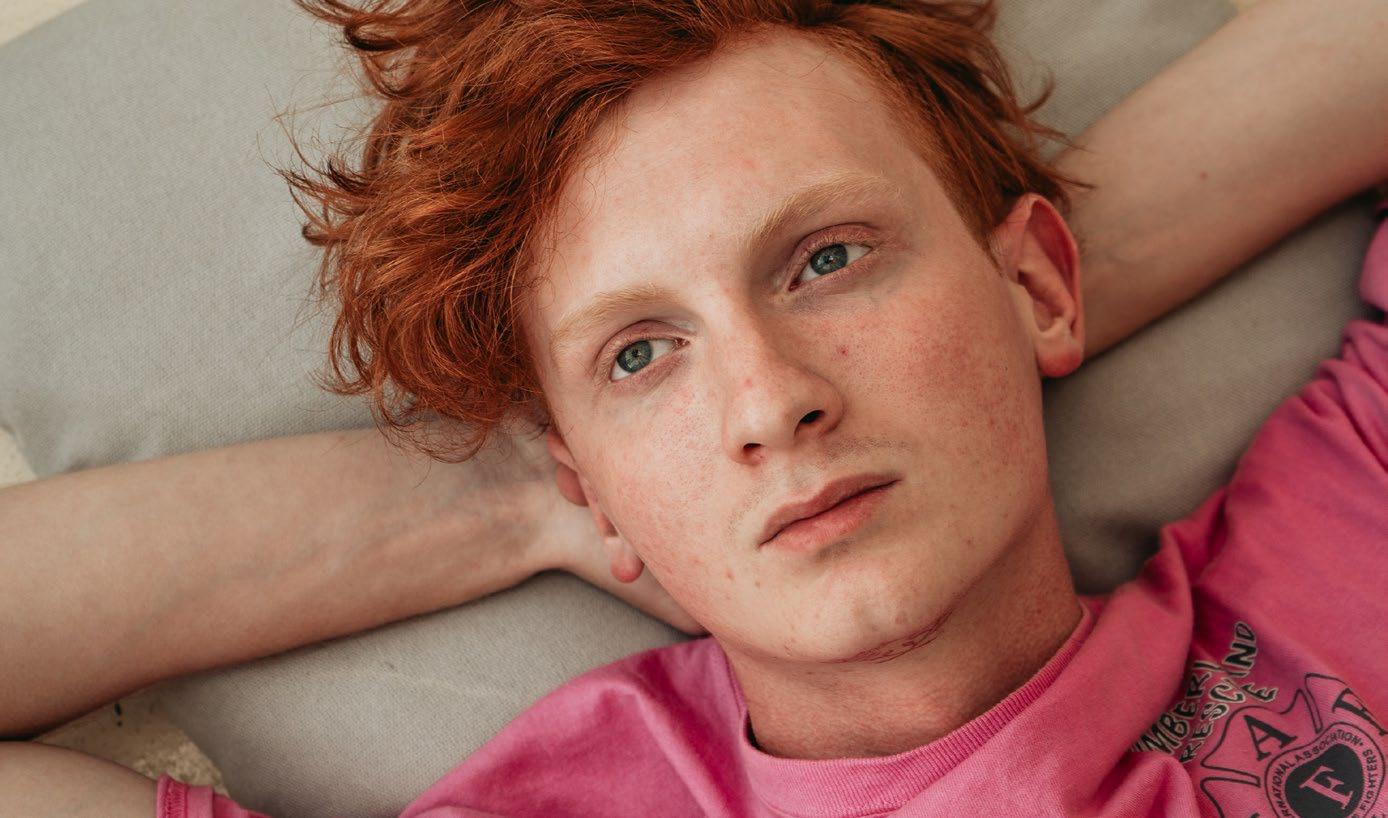
Adrienne and Stephanie Vendetti
Growing up, many natural redheads face bullying and feel outcasted amongst a sea of blondes and brunettes. Years later, the tables turn when the bullies want to be redheads and endlessly search aisles for the perfect red hair. But, the question is: how does a young redhead feel empowered about her self acceptance. “Stop working on improving your self-esteem. Instead, aim for true self-accept ance. Too many people base their self-esteem on compe tent performance of tasks as judged by the outside world and then define themselves based on these opinions and reactions of others.”
West writes in her book “Pack Leader Psychology” that low selfworth drives the need to seek external approval: “The more parts of ourselves we reject, the more important it is to feel accepted.”
“I believe we should stop emphasizing self-esteem because it is often taken to mean other-esteem. Yet a person who is overly concerned with the external judgments of others or who values measures of success based on competence often has very low self-acceptance,” says West. “For example, narcissists say they have very high self-esteem. Yet they are on an endless search for approval and actually have very low feelings of worth and self-acceptance. This is what leads them to be attention-seeking, to act superior, and to brag.”
The goal should always be to accept every quality about yourself: your red hair, light skin, freckles and the fact that you may not be able to tan ever. They are qualities that are beautiful and unique.
West writes, “Intrinsic self-acceptance, free from the fear of judgment of others, will bring true inner confidence that is not dependent on the opinions of others. Pursuing the approval of others leaves one lacking in confidence, because your self-esteem will always be at the mercy of others — a very weak position to put yourself in.”
Once you accept who you are, others will love it too. Once you are perceived as one who has self-accept ance and confidence, you’ll hear compliments like,
“WOW. I WANT TO BE A REDHEAD. IT’S SO COOL!”


I recently went to see Ed Sheeran play a Tuesday night gig at the O2 Arena, expecting a pleasant diversion from my work routine, a quick catch-up with a friend and then to be in bed by 11pm. What I actually got was close to a life-changing epiphany.
silly little songs about ginger prejudice, photographer Thomas Knights has made a powerful series of photos of Red Hot attractive ginger men. “The project celebrates one that made him (Knights) looks strong and confident and sexy and the other things that redheaded men were so rarely depicted as. Something to turn ‘ginger’ from an insult into a boast. Something to ensure no kid would ever hate himself like he once did because of the colour of their hair. TAKE YOUR DARKNESS AND MAKE IT A SOURCE OF LIGHT” (Williams, 2020). And yes, Ed Sheeran is a sex God!
When Sheeran entered the concert hall, rammed with tens of thousands of young women, blasts of pheromone-laden screams hit my face like a tube train flying past. Throughout the concert hips swayed, eyes were caught in lingering stares and iPhone cameras were stretched to their maximum magnification. Here, thousands of young women were basking in the presence of their chosen sex symbol: Ed Sheeran.
As a ginger man like Ed, this was a very weird experience. A part of me couldn’t compute the combination of sheer lust with Sheeran. I was sure I had shaken off any latent ginger-related self-esteem issues, but obviously my subconscious still garners some confusion about the idea of a ginger with sex appeal.
Apps such as Tinder and Bumble have also made it easier for people to find the types of people that they fancy, which is really great for ginger men and the women who love them. There’s even a few dozen dating sites dedicated to those with red hair, regular ginger meet-ups around the world which draw thousands, and there’s an online campaign to create ginger emojis. I know it sounds ridiculous, but these things help. Nowadays I do feel a sense of pride about being ginger and part of a club. With Ed Sheeran as our chairman, who wouldn’t want to be part of it?
It wasn’t until relatively recently that I could accept the fact that I could be de sirable as a red-haired man. I couldn’t ac cept compliments about my appearance, and forget the idea of having a girlfriend! To day, I’ve shaken off those insecurities (how many men can say they’re appeared topless in GQ?) but they’re still there in my character.
As I’ve grown up, popular culture’s attitude to redheads has changed completely. Comedians such as Tim Minchin have made their name with



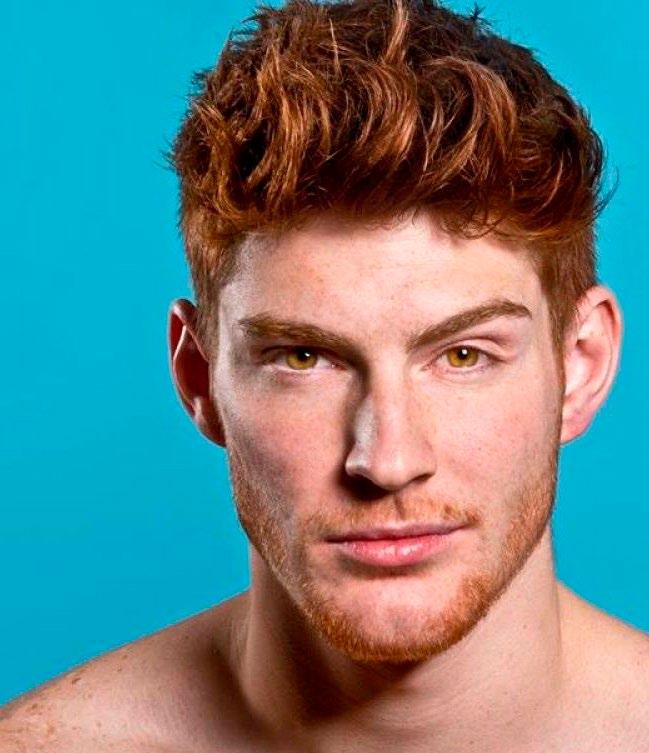
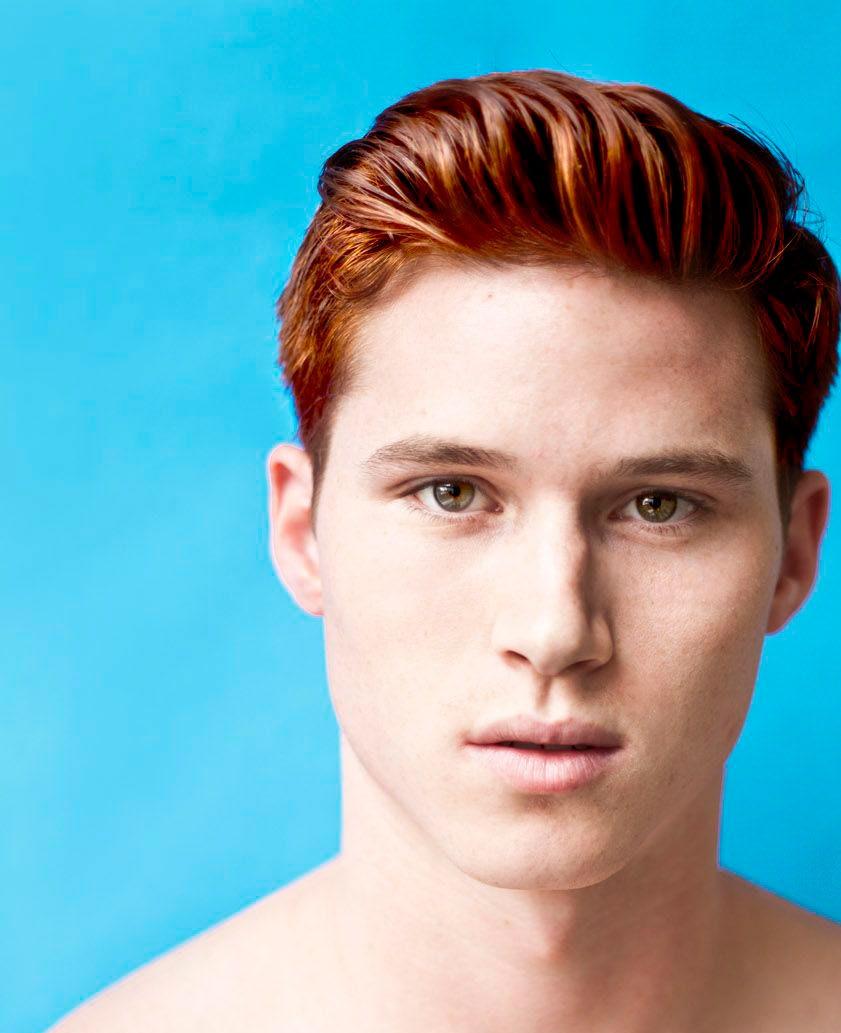

Natasha Sheldon

History has dealt a mixed hand to the redhead. Alternatively admired or derided for the colour of their crowning glory, attitudes to those with red hair have always been polarized. Throughout time, redheads have been portrayed as beautiful and brave or else promiscuous, wild, hot-tempered, violent or immoral. Gingernut, carrot top, flame-haired, copper head and rusty just some of the nicknames for red hair. The modern mind also associates the hair colour with individual countries such as Scotland and Ireland or cultures such as the Vikings. The reason for these attitudes and associations is complicated and lies partly in the origins of red hair and the human reaction to things that are different. For although 40% of people carry the gene for red hair, real redheads are rare, amounting to no more than 1% of the population. It requires two carriers to make a red headed child. So why is red hair so rare and unique? What is its history, and is it fair to assigned heads such a turbulent reputation?

Red hair has always been a question of genes. Clues suggested that red hair could have evolved in Paleolithic Europe amongst the Neanderthals. Scientists analyzed Neanderthal remains from Croatia and found a gene that resulted in red hair. However, the gene that causes red hair in modern humans is not the same as that in Neanderthals.
The origins of red hair have been traced back to the Steppes of Central Asia as much as 100,000 years ago. The haplogroup of modern redheads indicates that their earliest ancestors migrated to the steppes from the Middle East because of the rise of herding during the Neolithic revolution. The Steppes were the perfect grazing lands for the herds of the agriculturists. Unfortunately, howev-



-er, the lower UV levels of the area limited their bodies’ ability to synthesize vitamin D. Vitamin D deficiencies bring about weak bones, muscle pain and rickets in children. So the migrants had to change. To survive their environment, people living in northern regions, in general, had begun to evolve to suit their environment and to allow their bodies more access to the limited light. As a consequence, their skin and hair started to become much lighter. In the eastern steppes, however, things occurred slightly differently. A mutation occurred in a gene known as M1CR which caused hair colour not merely to lighten but to change entirely- to red. The skin of these new redhead people was well adapted to absorbing the much-needed UV light. It was, however, a little too sensitive to the sun- which is why redheads often sunburn and are more prone to skin cancer.
The accounts of classical writers are quick to highlight red hair amongst the tribes they encountered in central and West ern Europe. As early as the fifth cen tury BC, Herodotus described the Budini, a Scythian tribe from the cen tral western Eurasian steppes as hav ing ”grey eyes and red hair,” as were the Thracians whose lands covered parts of modern Turkey, southeastern Bulgaria, and northeast Greece. These tribes were regarded barbarian by the Greeks, despite their military prowess and sophisticated art. However, this was most likely because they were non-Hellenic than because of their hair colour. Meanwhile, the Romans were also noticing the abundance of red hair amongst the tribes they were encountering as their empire progressed ever westwards.

These pioneers of red hair then began to spread to the Balkans and central and Western Europe in the Bronze Age as they migrated once again, this time in search of metal. The majority of the migrants remained in these regions, although some spread further west to the Atlantic seaboard, and fewer still moved eastwards into Siberia and some as far south as India. However, these latter migrations were scant- which explains the rarity of red hair in these areas.
The Balkans and Western Europe now became established as the geographical and historical homeland of red-haired culture. It was one that was observed by ancient writers who began to form their conclusions about the redhaired peoples they encountered.
Tacitus also noticed the prevalence of red hair amongst the Germans. “For my own part, I agree with those who think that the tribes of Germany are free from all taint of intermarriages with foreign nations and that they appear as a distinct, unmixed race, like none but themselves, “ he noted in his Germania. “Hence, too, the same physical peculiarities throughout so vast a population. All have fierce blue eyes, red hair, huge frames”. He also noticed that many of the Celtic tribes of Britain also had red hair- and concluded- correctly- that this pointed to an interrelationship between the Celts, Germans and Gauls who all unbeknown to him originated from the central Asian migrations into Europe. In particular, Tacitus noted the Caledonians had “red hair and large limbs” which he felt pointed to a “Germanic origin.”

but that their outer parts became red when they dried off in the sun! However, despite this rare attempt to rationalize red hair, ancient accounts emphasis certain traits as prevalent in redheads. As well as describing the Gauls, Germans, and Celts as predominantly red headed- something that wasn’t true for everyone- the ancient writers portrayed them as warlike and uncivilized.
All of these redhaired tribes match the genetic makeup of the current inhabitants of the lands they occupied. Scotland, Wales and Ireland respectively– the British Celtic nations- all having the high level of red gene carriers and manifestations.
On mainland Europe, Brittany, the border between France and Belgium, Switzerland, and Jutland – the ancestral lands of the Gaulish and Germanic tribes- also carry high levels of the red-haired gene. Southwest Norway is unique amongst the Scandinavian countries for the emergence of red hair which some feel justifies the portrayal of Viking However, not everyone in these areas would have had red hair. So why was it standing out as such a prominent feature to these southern
Both Greek and Roman culture were astute in noticing red hair was more prevalent in certain climates. The philosopher Aristotle noted that those living in northerly climes, as well as fishermen and divers usually had red hair. He reasoned this was because the moist environment both parties frequented made them chilly individuals
These portrayals were reflections of inbuilt classical preconception of redheads. The Romans had quite a contradictory attitude to fiery hair. Once again, they regarded redheads, as untrustworthy- yet red hair was also desirable, as many Roman ladies aspired to it, prompting Roman wig makers to import quantities of red hair from northern Europe. The Classical suspicion of redheads probably derived from the fact red hair was so rare in the Mediterranean regions. Although Archaic Greek texts like the Iliad refer to Greek heroes such as Achilles and Menelaus as red-headed, less than 1% of the Mediterranean population carry the red-haired gene-despite the descent of some Italians from a portion of the steppe migrants who crossed the Alps in around 1300BC. Intermarriage with other peoples with more dominant genes meant that the recessive red gene rarely had a chance to express itself and so was incredibly rare. However, this suspicion of red hair continued and evolved with time. In the Middle Ages and beyond, redheads acquired even more negative connotations. Red hair became an almost demonic badge,


associated with witches, vampires, and werewolves. By the Renaissance, the Spanish Inquisition was using red hair as a way of identifying Jews- despite the low prevalence of red hair in Jewish people. This badge stuck. Artists began to portray dubious Jewish characters as redheads, such as the treacherous Judas Iscariot and Mary Magdalene before her repentance. This prejudiced tendency was carried into literature, with both Shakespeare and Dickens portraying their Jewish characters of Shylock and Fagin as red-haired.
Redheads were certainly rare. However, perhaps there is something more than a fear of the ‘other’ at work here. Reactions against redheads could be a reaction against the color red itself, as, in nature, red is often a symbol of danger. In 2011, a study of Rhesus monkeys was carried out. Keepers in red, green and blue shirts delivered food to the monkeys. While the monkeys readily accepted the food from the blue and green shirts, they universally rejected food brought by the red shirts.


you are
Redheads, rest easy: your chances of climate change-induced extinction are identical to those of people with less exhilarating hair colour. This seemingly obvious fact will no doubt drown in the current deluge of coverage declaring that gingers are genetical ly doomed. The source? A company that sells genetic ancestry testing.
Let’s deal with the science. Red hair is caused by changes in a single gene, and exists in the overall population at about 4-5%, making it beautifully rare. It is probably due to a degree of isolation in an ancestral group at some point in our ancient history.

The gene is recessive, which means that both parents have to pass it on for their child to be redhaired. Various reports quote a scientist “who did not wish to be named” saying “I think the regressive gene is slowly dying out”. I’ve studied and written about genetics for 20 years now, and I’ve not come across “regressive” genes before. I’m willing to give this mystery scientist leeway that this was an error by the journalist, and the enigmatic-but-no-doubt-very-credi ble researcher meant “recessive”.
The question of whether humans are still evolving crops up every now and then. Our genes change over time, and the frequency of those genes in populations changes too. The change is slow, and we have largely unshack led ourselves from the forces of natural selection.
In this particular case, it is very hard to think of a way that the ginger gene might be extinguished. The selective pressure asserted in this tale is that redheads exist as an adaptation to cloudy weather in Scotland. Alas, there is scant evidence for that – scientists are still debating if the red-hair gene or, indeed, any of the genes that af fect skin, hair and eye colour, spread because of a lack of sunlight, or be cause of some sort of mate prefer ence, or just by offchance. Nor am I aware of any evidence that Scotland is getting less cloudy as a result of climate change. To become extinct, ginger hair would have to be a powerfully maladaptive condition, which of course it is not. It’s a very lovely condition.

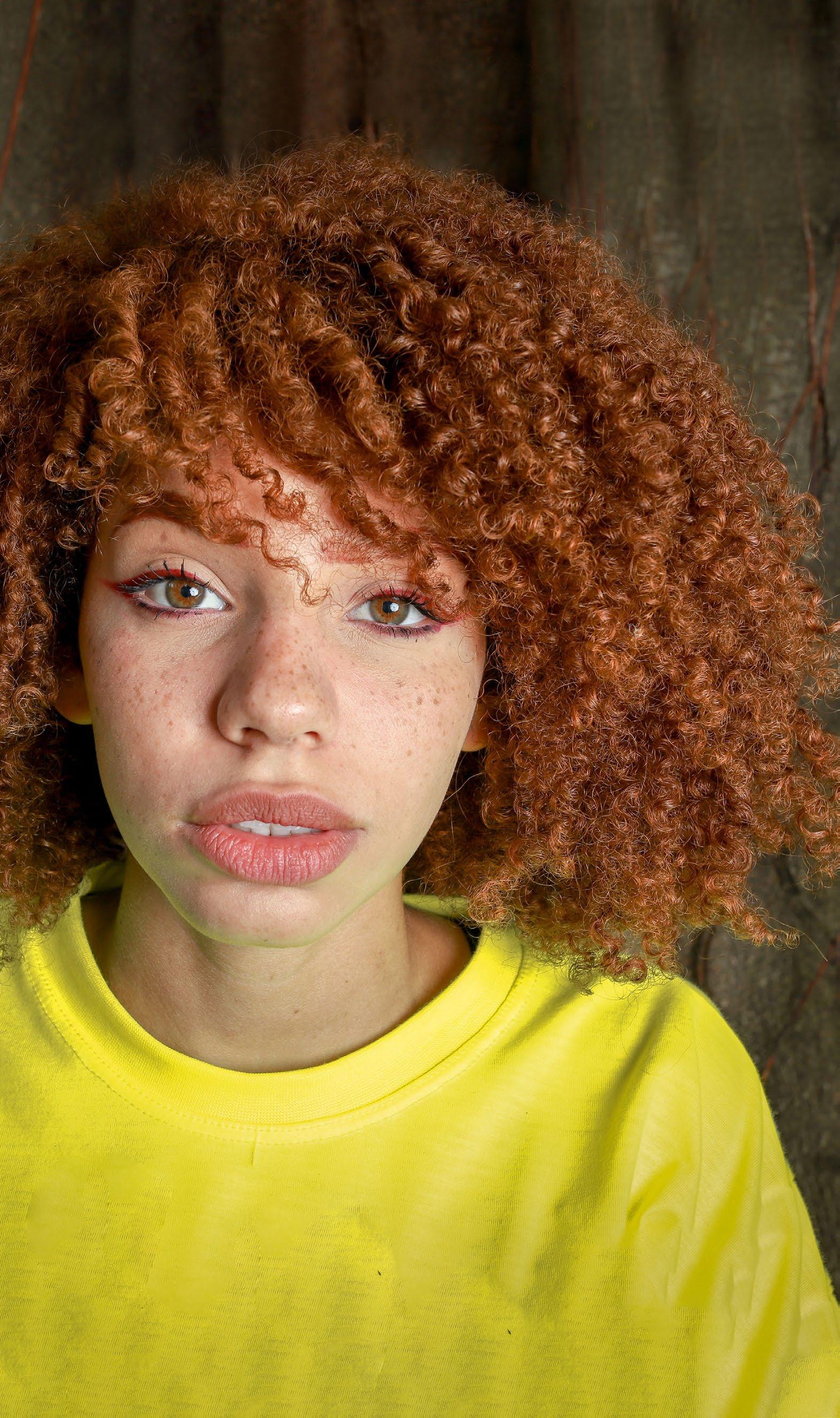

Here’s how the ginger gene could vanish: not only would every redhead have to stop having sex for some reason, but every carrier of the gene would too. As someone who finds red hair rather attractive, should this come to pass, I will volun teer to help them out of their imaginary celibate rut. Sadly, unless some Eric Cartman-es que genocide transpires, I am supremely confident that my services will not be required.
Now, if this were a hair commercial, I would move on by saying “that was the science bit”. In fact, this whole tedious saga is just an advertisement – and science by press release. Finding out your redhead genetic status is merely a £25 add-on to one of the genetic ancestry packages from ScotlandsDNA. The company’s chief executive, Alistair Moffat, is the source of this latest septic wave of genetic astrology. Moffat is the rector of St Andrews University. I can find no evidence that he has any qualifications in genetics, though this has not deterred him from frequent assertions about the subject.
In 2020, Moffat appeared on Radio 4’s Today programme making some unsupported claims concerning the ancestry of some Brits being Tuareg, Berber and even the Queen of Sheba. Geneticists David Balding and Mark Thomas from University College London issued complaints to the BBC, to the company’s chief scientist, Jim Wilson from Edinburgh University, and a detailed letter to Moffat pointing out the multiple fallacies in his claims.
Following the complaints, Moffat wrote to the then provost of UCL, Malcolm Grant, demanding that he force Balding and Thomas to back off. Grant told him that he would do well to respect academic freedom – a polite scholarly way of telling him to sod off. Legal threats were issued and the whole sorry saga is documented in necessary detail on the UCL website.
Last year, following a press release from Moffat’s sister company, BritainsDNA, many newspapers devoted chunky column inches to the revelation that Prince William carries Indian DNA. It took a genetic genealogist – Debbie Kennett, an honorary fellow at UCL – to thoroughly debunk this wobbly piece of scientific trivia.
These promises of DNA and ancestry are everywhere. They are seductive because they are simple and clean, but alas humans are not. We are messy, and our DNA is almost inscrutable. Genetics is complex, and anyone who tells you different is selling something. I will be plugging my own book on the stories we can and can’t tell about human genetics in a year’s time. There is so much joy and wonder in science, in the poetry locked in our genomes. Its publication is now put off by one day, as today I chose to write not about the marvel of DNA, but to prick this bubble of flapdoodle.
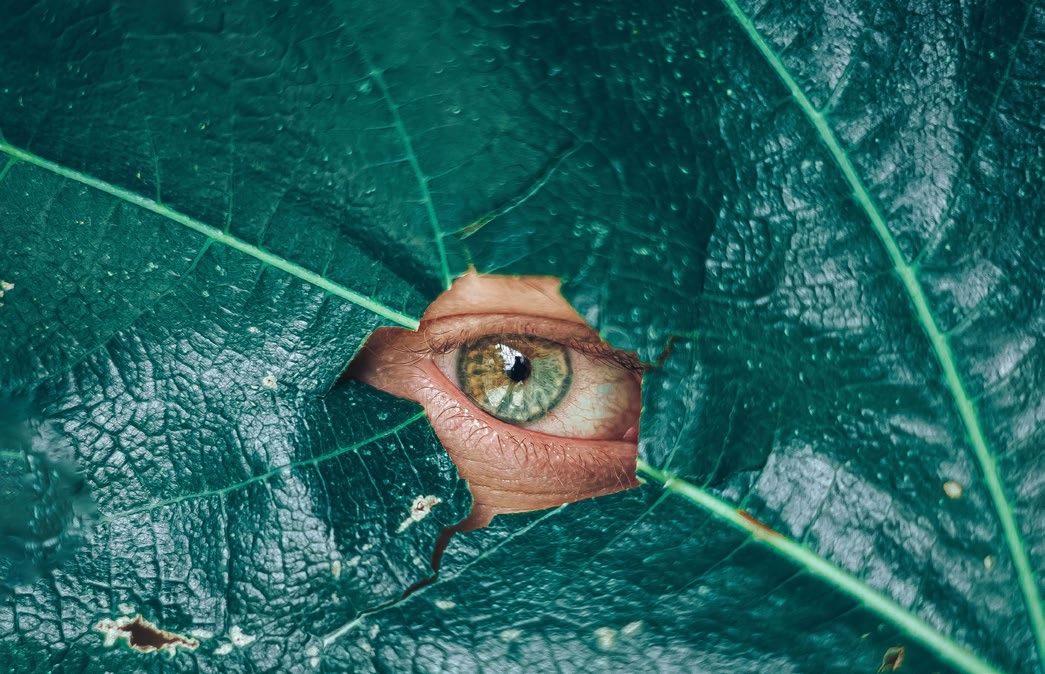
Rossana Gombetti
End of 2030: Scientists, doctors and geneticists found out a sudden decrease and disappearance of the MC1R gene mutation. Since the beginning of the year, only 0,2% children in the entire world were born with this mutation. Skin problems like cancer and serious sunburns quintuplicated and discriminations against redheads excessively intensified with several conflicts around the globe.
A famous Irish geneticist and lecturer, specialized in the research of medical, psychological and genetic problems affecting the red, found out that in the middle of the Norwegian sea there was a small island that would be the perfect place where that people could live.
There, there was a climate never found anywhere else. It would mean no more skin cancer, sunburn; preservation of the genetic feature, but above all no more discrimination.
The scientist with the help of his wife a ginger woman and medical team, organized several international awareness campaigns to convince people to go, like him, to live in the island.
In the 2038, 80% of the ginger world population moved and settled there meeting soon after the beneficial effects.
The Island is established and ruled by the founder and his researching team. They set up a democratic republic like their birth nation, the Ireland. Since the geographical and climatic conditions of the country, it is difficult to reach but its borders are strictly supervised. Even though nobody except gingers are allowed to live there, all the 50.000 citizens can normally leave and come back hosting sometimes their foreign relatives.
Leaving the home country to start a new life in another, is not an easy decision.

All the Daehder citizens made important sacrifices to find a better life in a place


For who wants to know more about Daehder, here you can have a look on its identity symbols created by the founders of this incredible island.; Cameron Sail and his reserch team. In the flag is depicted a lock of red hair and four dots that symbolise the founders of the Island. Every element of the design is surrounded by the colours of their home country the Ireland. This means how being tied to our origins is important despite everything.
In Daehder the tradition is important, indeed the citizens use only notes to pay; the coins are too heavy. About the idea of cashless payments, as Cameron claims in an interview, they are preparing everything to finally keep up with the times in a near feature.
The design represents sea waves and hair in one side, and the sea with seagulls in the other. These brids have been chosen to depict freedom, one of the value of this Island. The symbol of the Hår is a lock of hair and the name means “hair” in Norwegian. Indeed the national language is a mix of it and English as we can see in the Fefti term: The words Femti and Fifty matched together.
The passport is really elegant. Does not seem a feminine design? If you had the same impession you guessed! This delicate illustration was made by Cameron’s wife. It represents again hair but in this case it can be seen as a head of hair or a single lock encircled by the four founders. Personally it reminds me also a sea horse with little bubbles around it. Nevertheless, wherever you look at it, it is simply fabulous.
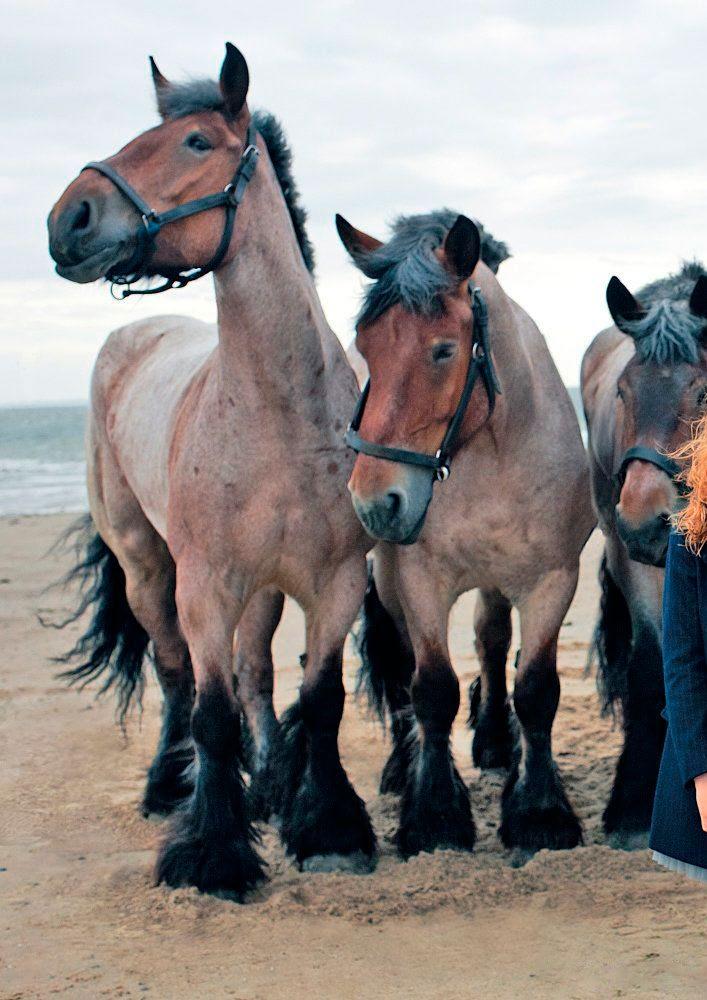
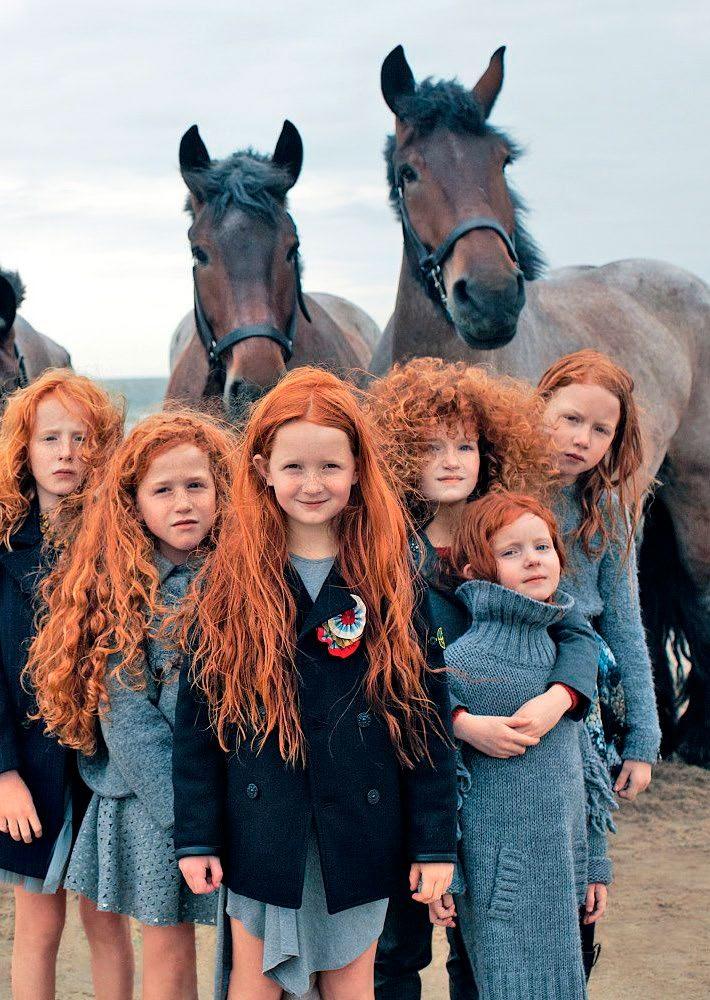
Marianne Power
I had been the butt of many jokes about my hair over the years and before the festival did not consider it something to celebrate I couldn’t believe my eyes either.
I was standing in a sea of more than a 1,000 redheads with hair of every shade: copper, mahogany, strawberry, auburn and dayglo orange. There were red beards, red mohicans, red curls, red spikes and even a red afro.
The two men either side of me wore orange Lycra bodysuits so tight their ginger hair was the last thing anyone was looking at. ‘Do you want a sticker?’ one asked. ‘Go on, have a sticker! You’ve got to have a sticker! It said “Justice for Gingers!”
‘We’re fighting against gingerism — the last acceptable form of racism. We have a whole manifesto for positive discrimination for redheads: we want more gingers at Oxford, more gingers in Parliament . maybe our own ginger country!’
The other chips in: ‘We’re here to show people that red is beautiful. We are scarce and rare, like gold, which makes us valuable!’
It was the 2018. Before I had time to process this radical new political movement, I was accosted by two men in white drainpipe jeans, open white shirts and dark auburn hair sprayed into quiffs, like a ginger version of Jedward. ‘We’re from Milano,’ said one of them, shoving a card in my hand. ‘This is our Facebook! Be our friend! Go Jeen-gerr!’
In a second they vanished, and I was being hugged by a woman with waist-long cinnamon-coloured curls. She had travelled from Israel to be there and couldn’t believe her eyes. ‘At home I am the only one — now here, I’m everywhere,’ she says. ‘It’s spiritual.’
We gathered in the town square in Breda, Holland, to celebrate the 6th International Redhead Day. Gingernuts had travelled from around the world to be there — from Australia, Canada, South Africa and South America — to have a group picture taken and participate in a weekend of events including lectures about being a redhead, the biggest ever redhead Mexican wave and a huge outdoor screening of Moulin Rouge, featuring the redhead Nicole Kidman.
Two men twins (33-yearold) Luke and Aaron, a teacher and a civil servant from Newcastle, were at their second year there. They had tried to find orange tuxedos in which to deliver their ginger manifesto, but couldn’t — so they had settled for orange bodysuits which costed £20 a pop from a party shop. Aaron said: ‘It’s great to be around so many other people who feel proud to be ginger.
The celebration of all things redhead was the brainchild of Nick Bass. Back in 2012, the (blond) painter placed an advert in an Irish newspaper to find redheads to feature in an exhibition, and more than 150 people
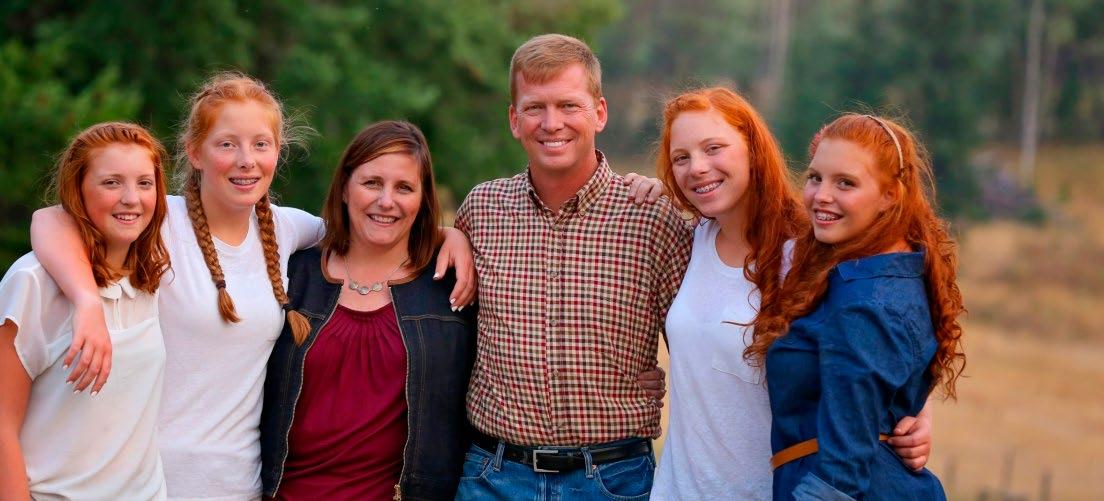


responded. Redhead Day was born.
I met a couple who lived in the outback in Aus tralia. They had black hair, but two children with red hair. The children were the only redheads in hundreds of kilometres, so they were feeling a little bit strange. The parents decided to bring them to the Redhead Day so that they would see thousands of other redheads. “It is really something. If you see one redhead it’s beautiful. If you see this many — it’s like a dream.”
A dream for some, but a nightmare for others. Including me. It is fair to say that I had misgivings about coming. As I had got older I had come to accept my red hair, but I didn’t consider it something to celebrate.
I couldn’t think of nothing worse. As a kid I would have giv en anything to have ‘normal’ hair. I went to a lovely school and was never bullied, but you could hear all the usual nicknames — I was called everything from Ginger Minger to Carrot Top and Duracell.
The fact is that being a redhead was still considered a joke. My sister, who dyed her red hair black when she was 16 and who now celebrates every new white hair because it lessens her orange glow, refused to come to the festival when I mentioned it. ‘It sounds like a freak show,’ she said.
Fast-forward a few centuries and beauties such as model Lily Cole and actress Julianne Moore may are still helping the cause, but there are still Facebook groups promoting ‘National Kick a Ginger Day’ and one Newcastle family was even driven out of their home by anti-ginger abuse in 2007. Just this summer, Simply Red singer Mick Hucknall spoke out against anti-ginger comments made on Facebook, calling them tantamount to racism.
I met 23-year-old student from Newcastle, at a stall selling T-shirts saying: ‘I’m having a red hair day.’ He was there for his fourth year, and was meeting friends from Belgium, Germany and the U.S., whom he had met through a website called redhead-world.net, an online redhead community.

go out with an other redhead?
‘Sure, why not?’
In my non-sci entific study over the weekend, it seems that redheaded men would be perfectly happy to marry a fellow redhead, but women are much more reluctant.
‘People would think we looked like brother and sister,’ said one.
‘You get to chat to people from all around the world,’ he says. ‘It’s great.’ But what do you talk about? Surely there’s only so much that can be said about being ginger. ‘We talk any anything,’ he says. ‘It’s just a place where you can feel accepted.’
He said there were even a couple who met on the site who were getting married. She was from Ohio and he was from Belgium; they chatted online for a year, then he flew over to see her and proposed. ‘There’s a joke that this is an event to try to make redheads get together to stop the gene from dying out,’ said the student.
On the Saturday evening, we went out for drinks and a dark-haired man came up to me and, without so much as a hello, stroked my arm, say ing: ‘I love your freckles He said he had come there precisely because he loved redheads. ‘You are unique and beautiful,’ he said.
I thanked him and run.
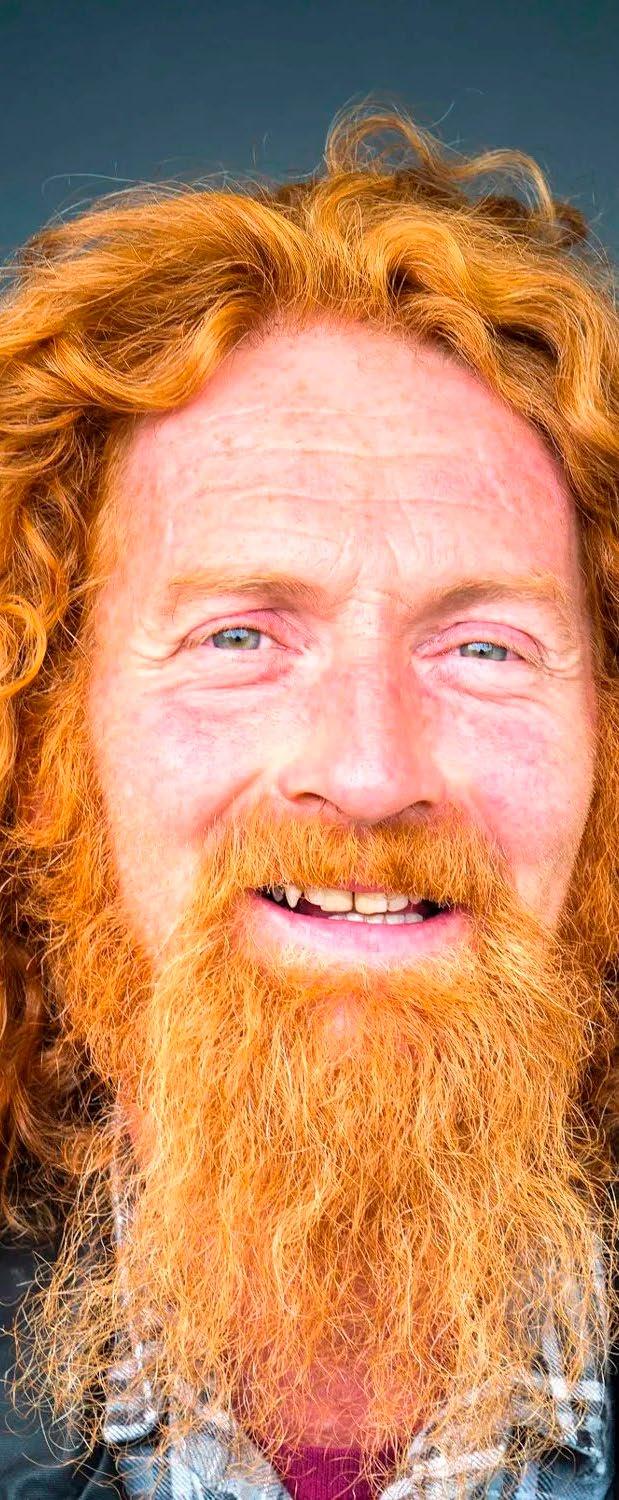

Later that night I was approached by a short, blond German. ‘So are you a very passionate person?’ he asked. ‘Er, no . . . why?’ I learnt for the first time that as well as having fiery tempers (which I still don’t have), there is a myth that redheads are great lovers..

One older lady, whose red had faded to gold, looked as though she had tears in her eyes. ‘It’s very special,’ she said. ‘Hard to put into words . . .’ ‘How strange that it might took a weekend in Holland doing Mexican waves and wearing silly T-shirts to make us feel like it was OK to be a redhead — but I think for many of us it was. Weird though the weekend had been, it had healed a little wound I didn’t even realise I had. For the first time ever I didn’t just accepted my hair, I loved it.
Now I am 53 years-old and I am so happy that also thanks to this in itiative was created a permanent huge community in the Island of Daehder in the Norwegian Sea. Even though I decided to remain here in Ireland to stay close to my sister, I am sure one day I will go back to share my soul with other marvellous and powerful red mates.
On Sunday morning — after queued up with 100 other gingers for coffee and croissants — we made our way like a red army through the town to the park to be photographed. Every shade of red, orange and gold was bobbing in the sunlight. There were so many that poor ten-year-old girl from Bristol was very worried. She was used to her 13-yearold brother, the only redhead in the family, standing out in a crowd, but now there were little Archies everywhere.
‘What if we lose him and get confused and come home with the wrong one?’ she asked her mum, watching her brother like a hawk.
As we all gathered in the park, television cam era crews and photographers went up in a crane to capture the incredible strawberry field. Everyone around me was smiling and laughing and feeling quite special. My fellow gingers looked so hap py, relaxed and confident that it rubbed off. I looked at everyone — even the man with no hair on his head but an orange beard that reached down to his tum my — and thought they looked beautiful. Really beautiful.


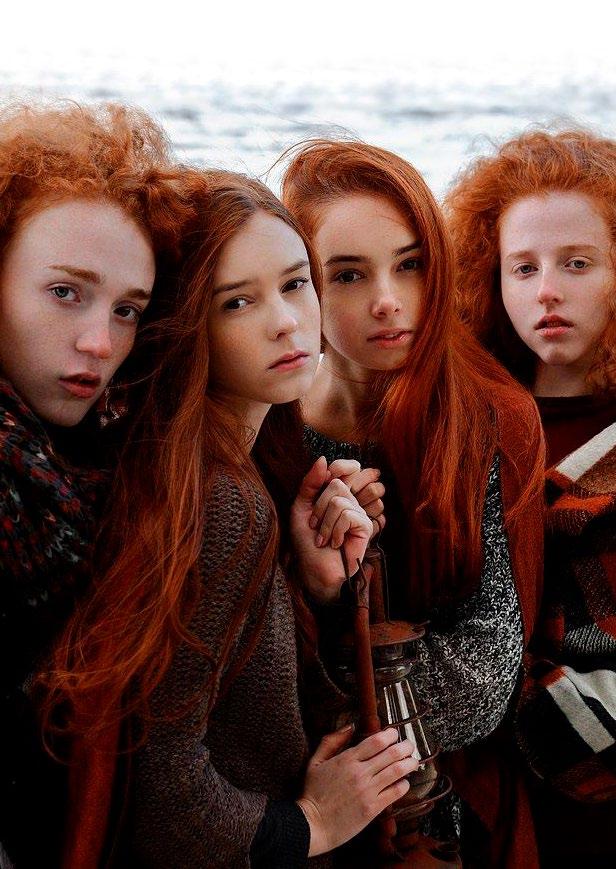
Ally Fogg
I’m a proud ginger and I’ve been abused, insulted and even, as a child, assaulted and bullied for it. I wouldn’t wish that on anyone, but I’m pretty sure I have never been denied a job or the lease on a flat be cause of my complexion. I haven’t been stopped and searched by police 25 times within a year because I am ginger, or casually assumed to be a threat, a criminal or a terrorist. I am not confronted by political parties and move ments, some with democratically elect ed representatives, which would like to see me deported from the country or granted second-class citizenship.
If Tim Minchin is right, only a ginger can call another ginger ginger. By the same token, perhaps only a ginger can effectively rebut the argument that so-called gingerism should be considered a form of discrimination, or even a hate-crime, equivalent to racism or homophobia. That case has been made often, most recently by Nelson Jones in the New Statesman, who in a blog post last week detailed a depressing litany of murders, assaults and suicides that have been linked to anti-redhaired prejudice.
Every one of those cases makes horrible reading – a heart-breaking tragedy for those involved, and a grim reminder of humanity’s capacity for unprovoked cruelty and aggression. Violent and sadistic bullying of all sorts is abhorrent, regardless of a person’s age or circumstances. When it is sparked by something as seemingly random and inescapable as hair-colour, body shape or imperfect facial features, it seems especially brutal and cruel. I also fully endorse Minchin’s beautiful line: “STICKS AND STONES MAY BREAK YOUR BONES, BUT WORDS CAN BREAK YOUR HEART”.
Likewise, no one has been putting up posters recently calling for me to be executed for gingerness. There are no respected religious leaders telling me that my very existence is sinful and that I’m heading for an eternity in hell. Nobody wishes to bar me from marrying my partner, wherever and however we choose, because she has (pe culiarly, I will be the first to admit) fallen in love with a ginger.
For that matter, if we ever did get married, neither she nor I have grown up in a world where I could be raped with impunity as the effective property of the non-ginger party. Nobody would have ever denied me a mortgage under my own name, as happened during our parents’ generation, or asked to talk to the non-ginger of the house about technical or mechanical matters. I haven’t heard any politicians or newspaper headlines, this week or any other, assume that if one of us stays at home to look after the kids it will inevitably be the redhead.
Some have gone further, arguing that the UK’s uniquely aggressive gingerism is indeed a form of racism, rooted in anti-Celtic, specifically anti-Irish, prejudice and therefore related to centuries-old matters of imperialism, religious bigotry and war. There may be some truth in that, but those roots are now buried as deep as the recessive genetic mutations in our MC1R proteins. Other forms of oppression are not only current, they are woven into the very fabric of our society.
Racism, sexism and homophobia are not just woven into the fabric of our history, they are living dynamics in our culture, even in our economy. They are, to greater or lesser extents, sy-


-stematic and institutional in most aspects of life and the struggles to remove them are intrinsic to wider political battles over the very nature of our society, public policy and economic system.
In that light, I would not hesitate to add disablism to the list of systematic oppressions.
After finally breaking free of the shackling language of “cripples” and “invalids” and securing the legal rights to access work and social participation, disabled people now face a twinpronged, co-ordinated attack from politicians and press, who demonise them as scroungers and malingerers while snapping thread after thread of the safety net which keeps many out of abject poverty, squalor and indignity. That is institutional discrimination and oppression of the most shameful kind. To even suggest redhaired people face similar issues is insulting, verging on the obscene.
paper claimed scientists had discovered. However, this was not only a gross over-simplification, but also an incorrect one. The real story of ground-breaking research into the genetics of ageing was, predictably, more complicated and less sensational. In a paper in the journal Current Biology, researchers from the Netherlands and the UK revealed they had discovered a gene that is linked with how old people look, as opposed to their actual age.
On average, those with a rare variant of the gene, MC1R, looked about two years older than their chronological age, while those with a more common variant looked two years younger. Having the rare variant means people are more likely to have red hair, while those with the more common one are more likely to have dark hair. However, the scientists told The Independent that it was a “step too far” to then conclude that people with red hair were more likely to age prematurely while those with dark hair could expect to retain a youthful appearance.
Anti-ginger prejudice and bullying is real and harmful, but the idea that it equates to these systems of oppression is fundamentally flawed. It assumes that all forms of prejudice and discrimination are equal and occurring in the same context when they really do not. It assumes that all forms of discrimination are the products of individual bigotry and irrational prejudice rather than structural and institutional divides.
As David Gunn, a senior scientist at Unilever and a co-author of the study, explained: “It’s important to avoid misrepresenting the results of this study.
The real danger in arguing that gingerism is just as harmful as racism, sexism, disablism or homophobia is that when you say those words, what some people will choose to hear is that racism, sexism, disablism or homophobia are just as superficial, just as trivial, just as much of a joke, as gingerism.
“Although the MC1R gene we identified to be involved in perceived age was also found to be involved in red hair and pale skin, the perceived age effect is independent of pigmentation as we tested for and showed in our study.”
The headlines trumpeted the news that the secret to “youthful looks” -- or even “eternal youth” – had been discovered in the “ginger gene”. People with the gene that supposedly ‘produces’ red hair and fair skin “looked much younger than their real age”, one news
